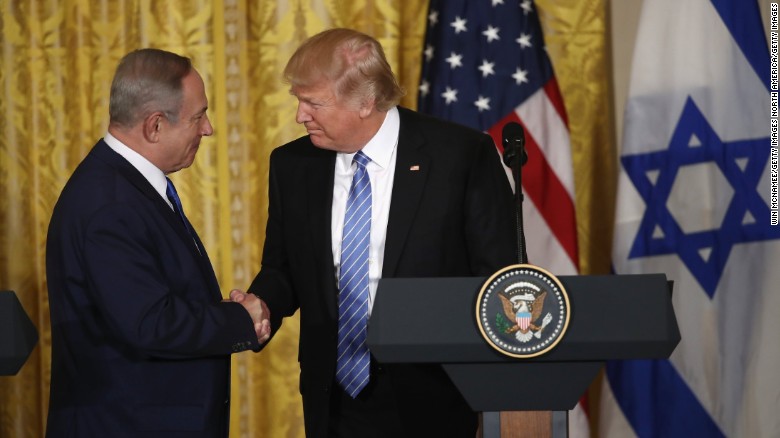President Trump jettisoned two decades of diplomatic orthodoxy on Wednesday, February 15, 2017 by declaring that the United States would no longer insist on the creation of a Palestinian state as part of a peace accord between Israel and the Palestinians.
Hosting Prime Minister Benjamin Netanyahu of Israel for the first time since becoming president, Mr. Trump promised a concerted effort to bring the two sides together, suggesting a regional effort involving an array of Arab nations. But he said that he was flexible about how an agreement would look and that he would not be bound by past assumptions.
“I’m looking at two-state and one-state” formulations, Mr. Trump said during a White House news conference with Mr. Netanyahu. “I like the one that both parties like. I’m very happy with the one that both parties like. I can live with either one.”
At the same time, Mr. Trump urged Mr. Netanyahu to temporarily stop new housing construction in the West Bank while he pursues a deal, echoing a position past presidents have taken. “I’d like to see you hold back on settlements for a little bit,” he told Mr. Netanyahu.
Mr. Trump’s position on a two-state solution discarded a policy that has underpinned America’s role in Middle East peacemaking since the Clinton administration and raised a host of thorny questions.
The Palestinians are highly unlikely to accept anything short of a sovereign state, and a single Israeli state encompassing the Palestinians would either leave them as second-class citizens or would no longer be majority Jewish, given the growth rate of the Arab population.
Still, long before Mr. Trump’s ascension, momentum for side-by-side states had faded not just in Washington but also in the Middle East, where many Israelis and Palestinians have given up hope or changed their minds about the concept. The leaders of both sides face domestic difficulties and seem unenthusiastic about the compromises that might be required to get to a mutually agreeable resolution.
The trick is that no one has offered a plausible alternative that would satisfy both camps, leaving the conflict in a state of suspended animation. Mr. Netanyahu is under pressure from his right-leaning coalition to abandon the two-state solution and even annex parts of the West Bank. And the Palestinian Authority faces pressure from Hamas, the militant group that controls Gaza and is sworn to Israel’s destruction.
Mr. Trump did not address these dynamics, instead emphasizing his confidence that he could produce a breakthrough. “I think we’re going to make a deal,” he said, describing that as personally important to him. “It might be a bigger and better deal than people in this room even understand.”
Read the full report at The New York Times.







